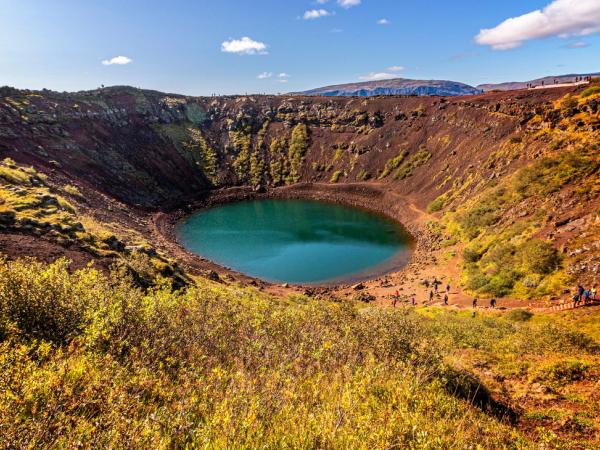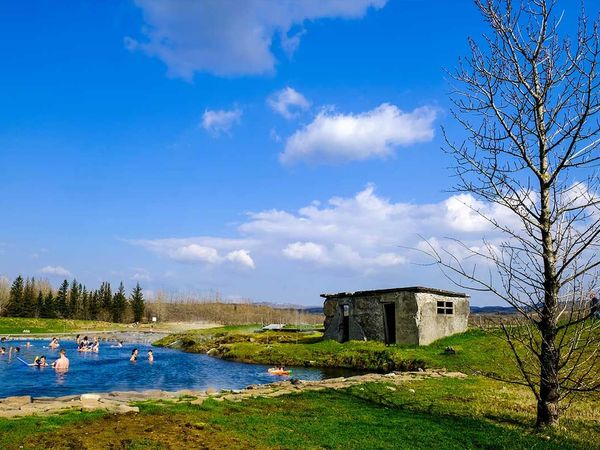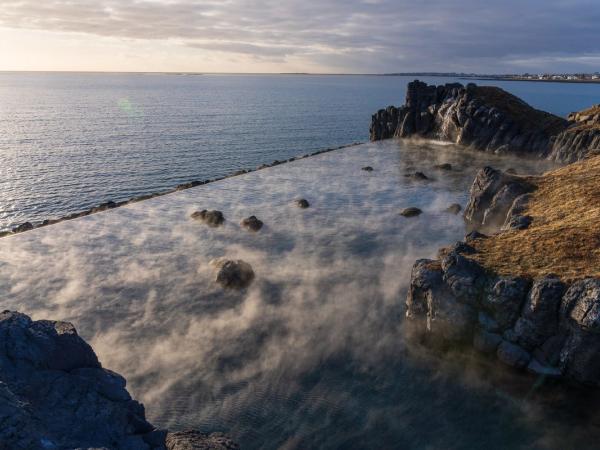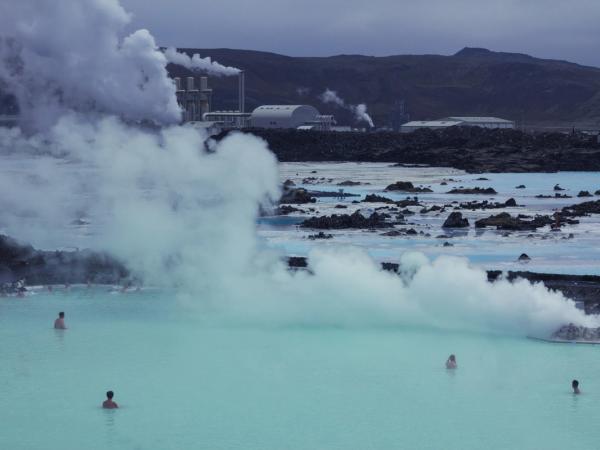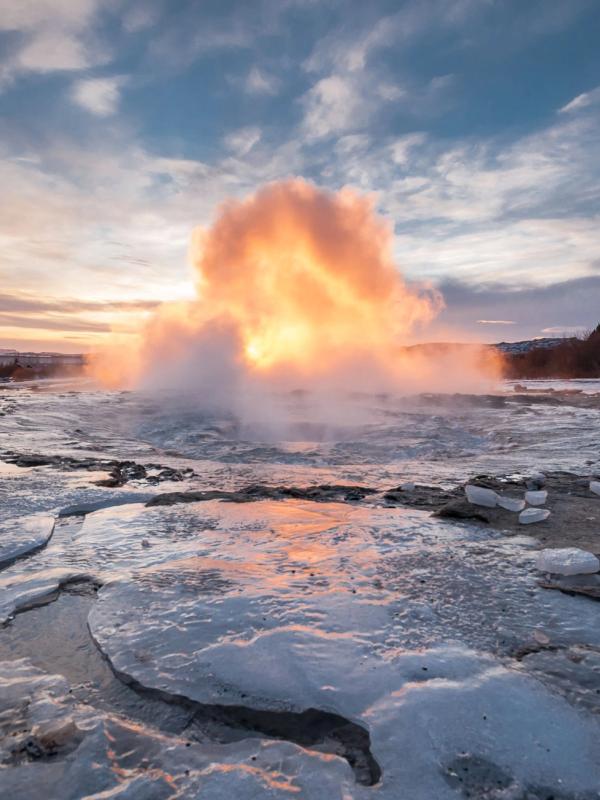
Three Days in Iceland: How to get the most out of a short getaway
In recent years, Iceland has become one of the best travel destinations in the world. The country has a lot to offer, both at a natural and cultural level, and many people make their way up to this Nordic country to discover some of the most impressive things there are. This island is so unique and varied that it takes quite some time to really see everything that can be found here.
However, sometimes we only have a short time for traveling, and we must make sacrifices and focus on a few key things. If that’s the case with you, don’t worry, we’re here for you. If you only have three days and have chosen Iceland as a destination, there’s a lot you can accomplish with proper preparation.
Key Takeaways
- For a three-day trip, it’s better to focus on one region rather than traveling a lot and spending a lot of time on the road.
- The southwest of the country has some of the best and most iconic sites in Iceland.
- Traveling in a campervan is the best way to maximize time and budget.
As we mentioned, there’s a lot to see in Iceland. Every region is packed with wonders that would make your jaw drop. Although Iceland is relatively small, it’s impossible to go everywhere and see everything in just a few days.
If you are going to spend just three days in the country, the best way to make the most out of your trip is to focus on one part and try to see as much as you can there. And the best way to do it is to have your own vehicle. If you rent a campervan, you’ll have a means of transport that allows you to choose your route and pace. You’ll also have a place to sleep. You just need to find a camping ground and you’ll save time and money.
For this short getaway, we’re proposing an itinerary through the southwest of the country. This area has a lot to see, including the capital, Reykjavik. It’s also close to Keflavík International Airport, so you won’t waste much time traveling. The road network is very good, and you’ll find the perfect balance between attractions, accessibility, and time well spent. It’s not a fixed itinerary. As everything is relatively close, it's quite easy to shuffle the days to fit your taste. For each day, we’ve selected three great options to spend the night, but there are more.
Check our camping sites guide to learn more. There’s no wrong combination. Let’s get into it!

Day 1: The Golden Circle
The Golden Circle is Iceland’s most famous route, a 300-kilometer loop (190 miles) that connects some of the best natural monuments in the country. It has geological wonders and places of high historical importance, all within a day’s drive from Reykjavik. It’s perfect for your first day, offering a taste of some of the best things Iceland has to offer. Plan for 8 to 10 hours to explore the three main stops and a few hidden gems.
Þingvellir National Park
Start at Þingvellir National Park, a UNESCO World Heritage Site just 45 minutes from Reykjavik. Here, the North American and Eurasian tectonic plates drift apart, creating a rift valley of dramatic cliffs and clear springs. This can be seen both above the ground and underwater. On the surface, the Almannagjá Gorge is a dramatic feature. But perhaps the most impressive part of the park is the Silfra Fissure. Here, you can swim between the continental plates in crystal-clear water with visibility up to 100 meters.
Þingvellir is the place where the Alþingi, Iceland’s parliament, was first established in the year 930. It’s the oldest parliament in the world still in effect. Not far from the Almannagjá Gorge, you can find the beautiful Öxarárfoss, a serene waterfall framed by basalt columns.

Geysir Geothermal Area
Next, drive 45 minutes to the Haukadalur Valley, home to the Geysir Geothermal Area. The star is Strokkur, a geyser that erupts every 5-7 minutes, shooting boiling water up to 20 meters (65 feet) into the air.
The surrounding area is full of hot springs and bubbling mud pots, and it’s one of the best examples of geothermal activity in all of Iceland. The original Great Geysir, now mostly dormant, gave its name to geysers worldwide.
Take time to walk through the several trails there are, snap photos, and feel the earth’s pulse beneath your feet.
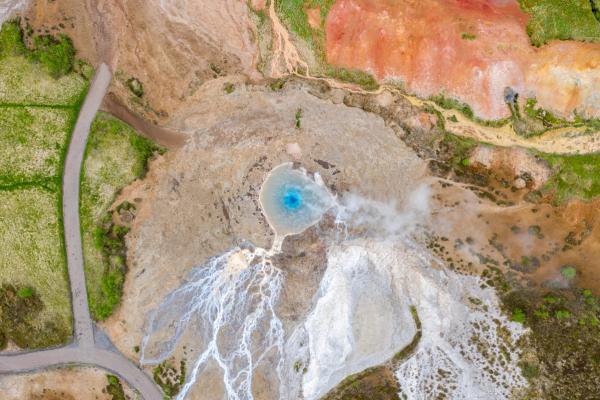
Gullfoss Waterfall
Not far from Geysir, we can find the third main stop of the Golden Circle. A 10-minute drive brings you to Gullfoss, which means “Golden Falls,” a two-tiered cascade on the Hvítá River. It gets this name because of the colorful effects created by the mist when the sun is out.
There are walking paths that take you to different viewpoints. Take the upper trail for panoramic views and the lower one to get closer to the falls.
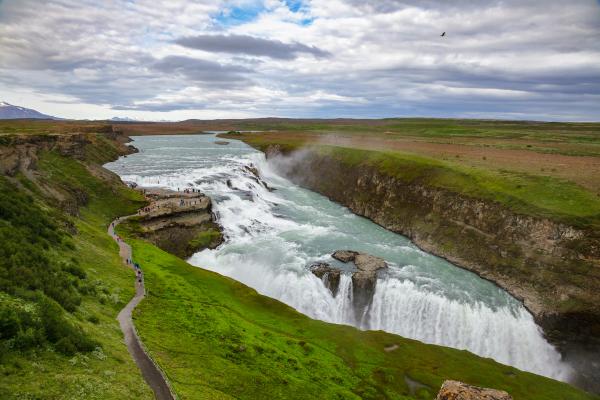
Secondary Stops
Apart from the three main stops, many other sites are also considered part of the Golden Circle.
One of them is the beautiful Kerið Crater, a volcanic cone with a vibrant blue lake inside, surrounded by red volcanic rocks. The contrast of colors is amazing. You can go to Friðheimar Farm, a geothermal greenhouse with a unique approach to tomato farming in Iceland. You can also taste some fresh produce and local recipes.
Besides the impressive Gullfoss and Öxarárfoss, there’s a lesser-known waterfall in this scenic route. It’s called Bruarfoss, quite close to the main entrance to Þingvellir National Park. It’s different from most Icelandic waterfalls because it is actually man-made. In the 10th century, Icelanders altered the Öxará River’s course to flow over the Almannagjá rift, and thus bring water to the Alþingi.
If you want to get in touch with the cultural side of the Golden Circle, drive to Skáholt, a historic site that was Iceland’s religious and cultural center for centuries. It has a modest cathedral and several archaeological displays.
If you have time, a fantastic way to end a day exploring this marvelous area or to have a break between stops, is to enjoy a relaxing geothermal bath. You have two fantastic options here. One is the Secret Lagoon, in Flúðir, a natural hot spring with warm, mineral-rich waters. The other is the Laugarvatn Fontana, on the shores of the Laugarvatn Lake. It’s a modern spa with great facilities and a unique treat: They bake their own rye bread buried in the ground using geothermal energy.
Where to Stay
There are many options to park the van for the night near the Golden Circle. Here you have three great choices:
- Þingvellir - Nyrðri Leirar Campground: As the name suggests, this camping ground is very close to the visitors’ center of the national park. It’s open all year, but some facilities and services may be unavailable under heavy rain or cold conditions. It has toilets, showers, hot water, and electricity hookups, with a communal kitchen for cooking. The grassy area for campervans and tents is really well-maintained, and there are picnic tables for outdoor meals. There’s no need to book in advance, as spaces are usually available.
- Laugarvatn Camping Ground: It’s located in the town of Laugarvatn, on the shore of the lake with the same name, and really close to the Fontana, the geothermal spa. This site is open from May to September. It features modern amenities like showers, toilets, and electricity, plus access to nearby hiking trails. The lake views are a bonus, and it’s close to the town’s center, with gas stations, shops, and restaurants, so it’s a great place for restocking.
- Geysir Camping Site: Right by the Geysir Geothermal Area, this campsite is open from May to September and perfect for those wanting to stay close to the action. It’s a spacious camping ground with grassy pitches for campervans and tents. It offers toilets, showers, electricity, Wi-Fi, and a washing machine. There’s a restaurant across the road, and there’s even a golf course nearby. The setting makes it unique, but it can get quite busy during peak season.

Day 2: South Coast – Waterfalls, Beaches, and Geothermal Wonders
The South Coast of Iceland is one of the most visited regions of the country, and for a reason. Here you can find some of the most iconic waterfalls on the island, gorgeous black sand beaches, and fantastic geothermal sites. It’s very well connected to the Golden Circle, and it’s quite easy to drive from one monument to the next. Plan for a 10-12-hour day of adventures. The area is full of amazing places, so prioritize based on your interests and pace.
Seljalandsfoss and Gljúfrabúi
A great place to begin is Seljalandsfoss, a 60-meter (198 feet) waterfall in a beautiful setting. What sets this place apart is that it has a walking path that goes behind the falling water, offering a unique experience. Wear waterproof clothes and shoes, as you can get wet.
A short walk away from the parking area is Gljúfrabúi, another amazing waterfall. Not as big as Seljalandsfoss, but it is hidden in a narrow canyon. To witness this natural wonder, you must go through a shallow stream. At the end, a big chamber opens up, where the water pours down onto a pool.
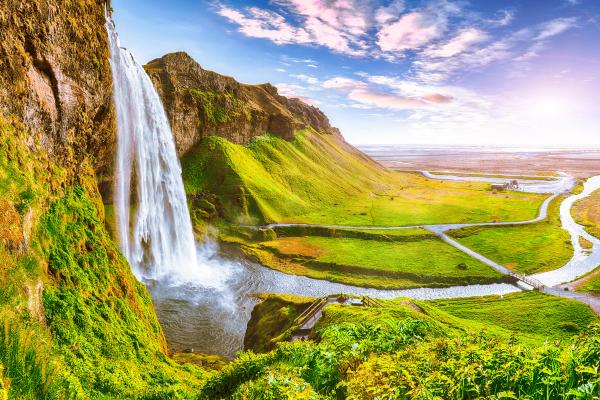
Skógafoss
You don’t need to drive for a long time to arrive at Skógafoss, another impressive waterfall. Skógafoss is 25 meters (82 feet) wide and 60 meters (198 feet) tall, and it’s one of the most powerful and beautiful waterfalls in the whole country. You can see it from the base or climb the staircase (beware, it’s 500 steps) to reach the top. From there, the views of the surrounding landscapes are amazing.
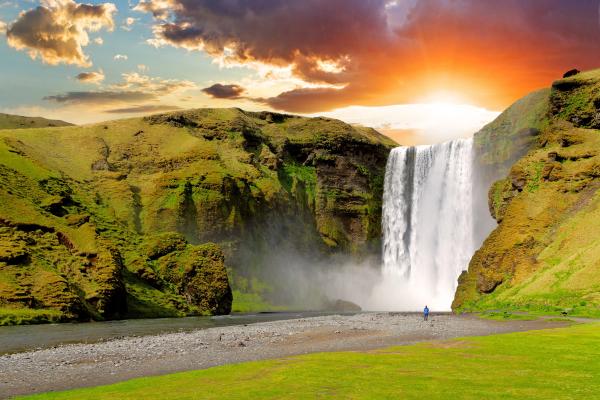
Dyrhólaey and Reynisfjara Beach
Continue for another 20 minutes further east to arrive at Dyrhólaey, a beautiful promontory with a lighthouse and amazing views. There’s a natural rock arch in front, and it’s one of the best spots in the country for birdwatching. There’s a huge colony of puffins in the summer months.
Below is Reynisfjara, one of the most iconic and photographed black sand beaches in Iceland. It’s surrounded by hexagonal basalt columns and the impressive Reynisdrangar sea stacks rising from the ocean. It’s a great place to take a stroll and sink in the natural beauty around you. But be careful of the sneaker waves, which appear out of nowhere and can be quite dangerous.
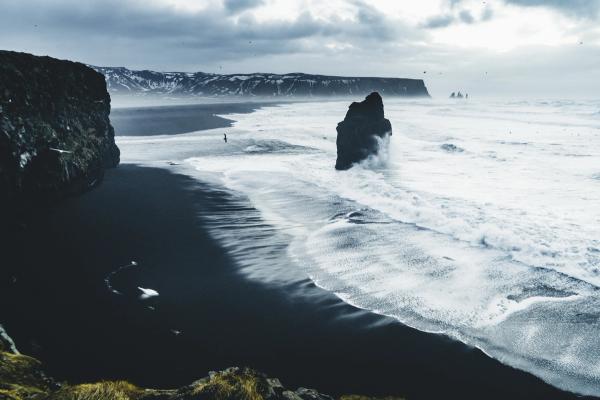
Solheimasandur Plane Wreck
In 1973, a US Navy DC-3 plane crashed on a remote black sand beach. While the crew survived, the remains of the plane remained there. The contrast between the white fuselage and the color of the sand has an eerie touch to it. It’s a 4-km round-trip walk from the parking lot, taking about an hour, although nowadays, there's a shuttle bus that takes you all the way to the wreck.
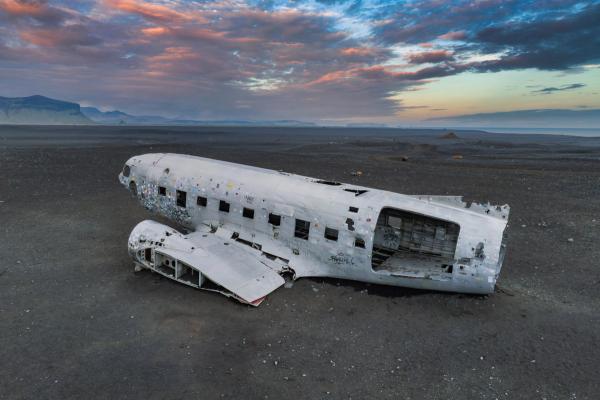
Hveragerði Geothermal Park
End your day at Hveragerði Geothermal Park, 45 minutes from Reynisfjara. This small park features hot springs, steam vents, boiling mud pots, and geysers, all spectacular to see. There are also therapeutic pools and steam baths where you can disconnect before calling it a day. One of the main attractions is that you can cook using geothermal heat.
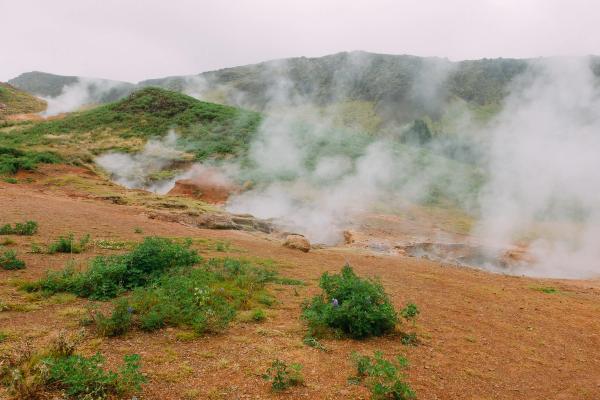
Where to Stay
- Selfoss Campsite: This campsite is open year-round and is located in Selfoss, one of the main cities in Southern Iceland. It’s quite big and has great facilities, such as toilets, showers, electricity, a communal kitchen, and hot tubs. There’s a supermarket and a pool nearby. The flat, grassy area is ideal for campervans, and its urban setting provides easy access to shops, restaurants, and other services.
- Hellishólar Camping Ground: Close to the town of Hvolsvöllur, this site is also open all year. It has toilets, showers, hot tubs, washing machine and a tumble dryer. There’s also a playground for kids. It’s located in a nice, rural setting.
- Vik Camping Ground: Vík i Mýrdal is one of the main towns on the South Coast, very close to Reynisfjara and Dyrhólaey. This campsite is open from May to October and features toilets, showers, and electricity, as well as a restaurant and shop within walking distance.
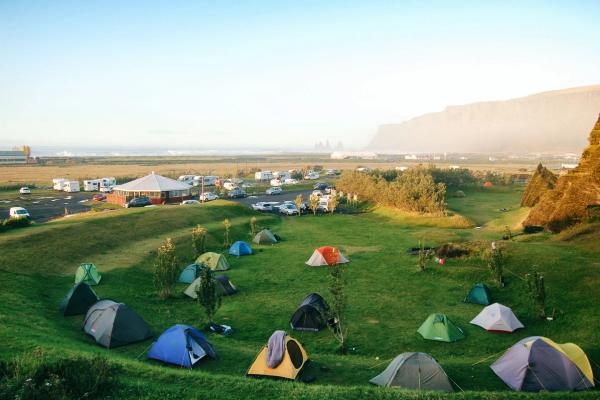
Day 3: Reykjavik and a Geothermal Spa Experience
To finish your short but intense stay in Iceland, you can discover the capital, Reykjavik, and its surroundings. Its proximity to Keflavik International Airport makes it a great choice for the last day, so you don’t feel rushed to arrive on time for your flight. At the same time, it can also be a good choice for the first day, so adapt the itinerary to your schedule.
Reykjavik Highlights
There’s a lot to see and do in the country’s capital. One of its most iconic monuments is Hallgrímskirkja, the largest church in Iceland. It was designed inspired by the country’s nature, and you can see the whole city from its tower. Laugavegur is the main street for shopping, street art, cafés, and restaurants.
If you want to get in touch with the local culture, go to the Harpa Concert Hall, with exhibitions and cultural events, or explore the National Museum for a dive into Iceland’s Viking past. The Perlan Museum has interactive exhibits about Iceland's natural wonders, including a man-made ice cave and a planetarium showcasing the Northern Lights. Don’t miss the opportunity to try some local food.
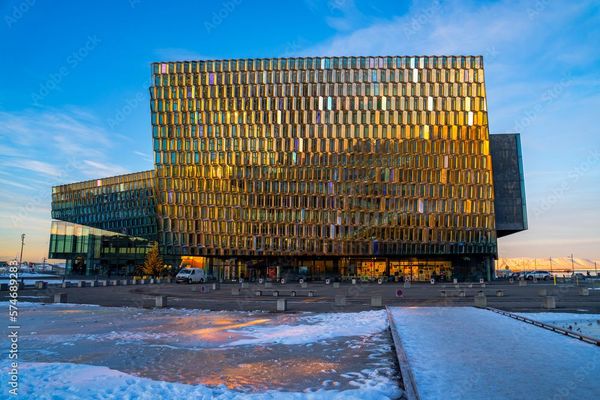
Geothermal Bathing Experience
A great way to finish your trip is to enjoy a fantastic and unique experience. Bathing culture is quite strong in Iceland, and both locals and visitors go to the many natural hot springs or spas to relax, socialize, and even conduct business. And two of the best spots in the country for a geothermal bath are quite close to Reykjavik.
One is the Sky Lagoon, just south of the city. This modern spa has an infinity pool overlooking the ocean and has a temperature between 38 and 40°C (100°F and 104°F). What makes this place unique is the Skjol seven-step ritual: warm lagoon soak, cold plunge, sauna, mist, scrub, steam, and shower. The spa also has two bars and a café where you can enjoy having a drink or even tasting some local food.
The other option is, perhaps, the most famous in the whole country: the Blue Lagoon. It’s a bit further away from the capital, but closer to the airport, so it can be a great addition to your itinerary. This beautiful spa is in the middle of a lava field, with milky-blue waters heated to 38°C (100°F). They are rich in silica, which is beneficial for the skin and muscles. The lagoon is known as a luxurious spot to visit, frequently featured in travel guides and on social media. But, for the same reason, it can be quite crowded at times (to avoid this, try going at night!).
Both spas require reservations, so plan ahead and arrive early to avoid crowds.
Where to Stay
- Reykjavik Eco-Campsite: This great camping ground is inside Reykjavik, in the eastern part of the city. It has pitches for campervans, caravans, and tents. It’s open year-round, but the area for tents is only available between May and September. It offers toilets, showers, electricity, a communal kitchen, and a BBQ area. There’s even Wi-Fi. It’s in a green area, near several attractions, and has a relaxed vibe.
- Hafnarfjörður Camping Ground: Ten minutes from Reykjavik, not far from the Sky Lagoon, this campsite opens only in summer. It has toilets, showers, electricity, and a playground for children.
- Mosskógar Campsite: Located in Mosfellsbær, 15 minutes north of Reykjavik, this site is open from March to December. It features toilets, showers, electricity, a washing machine and dryer, and cooking facilities. It’s ideal for those wanting a quieter stay while still close to the city.
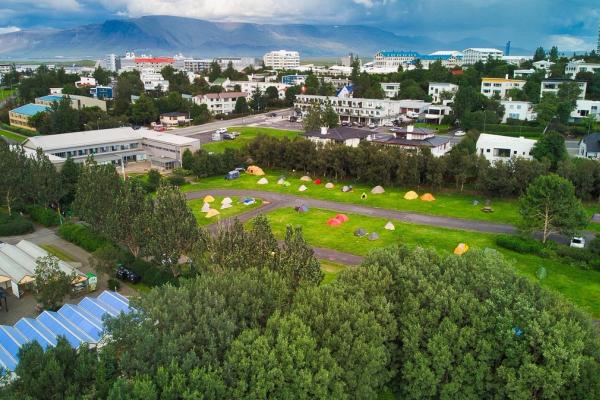
Travel Tips
- Drive safely: Iceland’s roads are well-maintained, but check the weather forecast and road conditions before starting your day. Drive slowly on gravel roads.
- Packing: Bring waterproof clothing, sturdy hiking shoes, and dress in layers, as the weather can change quickly.
- Campsite Booking: If you’re coming in peak season (June to August), it might be a good idea to book campsites in advance, although not all of them accept reservations.
- Timing: Start early to maximize your day, especially in winter, spring, or autumn when days are shorter. The Golden Circle and South Coast are accessible year-round, but traveling in winter requires extra caution.
- Spa Reservations: Book Blue Lagoon or Sky Lagoon tickets in advance, as they sell out quickly. Arrive early to avoid crowds.
- Budgeting: Campsites cost $10-20 per person per night. Bring food for cooking at campsites to save money, as dining out in Iceland can be pricey.
Conclusion
Three days in Iceland may sound short, but you can still enjoy a fantastic trip if you plan well. As Keflavik International Airport is the main entrance to the country, we have chosen an itinerary that is not far from it and still provides access to some of the best sights. The southwest has some of the most iconic attractions in Iceland, so you just need to rent a campervan, plan out your itinerary, and get ready for an unforgettable adventure.

